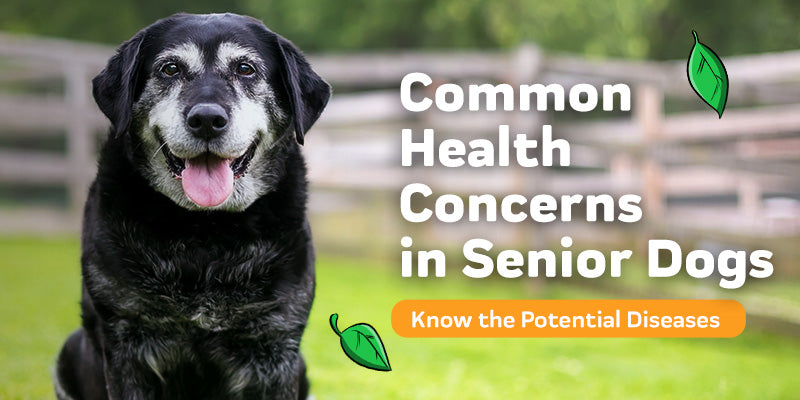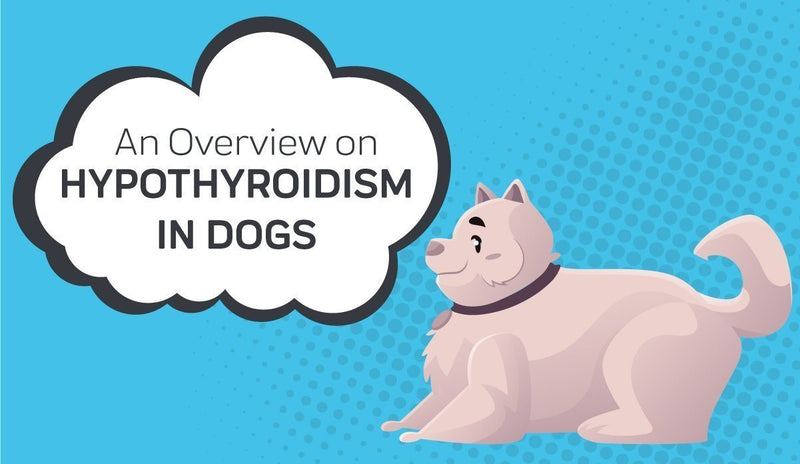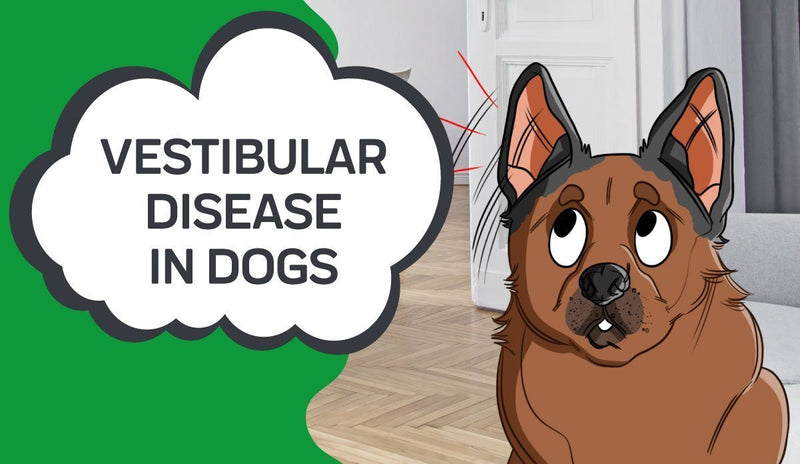- What Are the Symptoms of Distemper in Dogs?
- How Distemper in Dogs is Diagnosed
- How To Treat Distemper in Dogs
- How To Prevent Canine Distemper
- Bottom Line
Canine distemper is a dangerous disease for dogs that can have lasting consequences. It often manifests in puppies and other adolescent dogs, making your otherwise cheerful four-legged friend start to act lethargic and feverish. Other signs of canine distemper are sneezing, diarrhea, and seeming to cry because of the appearance of fluid discharge through the eye, but that’s not all distemper does. If left untreated it can cause severe neurological problems for your pet, like seizures and permanent shaking.
Diagnosing your pet with distemper can be done with the help of a vet. Once the signs of distemper present themselves you should make an appointment with a vet and try to limit your dog’s exposure to other canines. Distemper in dogs is contagious, so you’ll want to clean all the items your animal interacts with like their food bowl and bed. Then, isolate your pup while you wait for them to get tested. Once you get your results, your vet will help you come up with the best treatment plan for your dog’s case.
Now, let’s break down the symptoms, diagnosis, and treatments for this disease.
What Are the Symptoms of Distemper in Dogs?
The symptoms of canine distemper in dogs vary as the condition progresses.
The initial signs of canine distemper virus include:

- Diarrhea
- Vomiting
- Fever
- Discharge from the eyes - either clear fluid discharge or purulent (pus-filled) discharge
- General gastroenterological problems
- Lethargy
- Hardening of the pads on their feet
- Loss of appetite
As this virus worsens your pet may also suffer from secondary infections that lead to:
Distemper is a viral disease that often presents similarly to kennel cough in domestic dogs. However, the two should be treated entirely differently, as canine distemper virus can be deadly if left alone to fester, because of the risk of secondary bacterial infections for dogs.
If you see signs of distemper in your pup, like vomiting or sudden weight loss, you should have your pet examined immediately – especially if they are one of the hundreds of unvaccinated dogs in the country that are at a much higher risk for the disease.
It’s important to note that canine distemper can live on surfaces and be transferred when your dog interacts with that contaminated surface. If you have multiple dogs in your house, isolate your sick pup, disinfect your home, and keep them away from other dogs until you receive a diagnosis.
How Distemper in Dogs is Diagnosed
If you suspect your dog is showing signs of distemper, they need the assistance of a vet immediately. A vet can run tests to check your pet for the disease. However, in the early stages of the virus, there is a possibility that you may receive a false negative. If symptoms persist, revisit the vet for another test.
Because of this risk of a false negative your vet will examine your dog alongside administering the test. They should also ask you questions that assess the risk factors for your puppy or adult dog. Typically, these questions will include points about, what other animals your dog has come in contact with (including other dogs in your area or other pets in the household), and when signs of the disease began. A good vet will also ask if your animal has experienced any other large changes in their life, like a move or shift in schedule recently. Additionally, they will take into account your pet’s medical history, as there is a distemper vaccine that puppies can get that would greatly minimize the risk of contracting the disease.
After assessing all of these points, as well as the animal’s physical condition and the test results, your vet will hopefully be able to say whether your pet has the disease or not.
How To Treat Distemper in Dogs

Treating distemper in adult dogs is no easy task. There is no cure – only prevention, or management of symptoms.
For an animal suffering from gastroenterological issues like vomiting and diarrhea as a result of the virus, one of the most common treatments is intravenous fluids. This can help address the symptoms of canine distemper your pet is experiencing while giving them an immune boost to help them fight the virus.
Alternatively, if your pet is suffering from long-term complications to their central nervous system like seizures or shakiness while walking, other treatment will be offered. Often ensuring they rest in a padded crate or other soft bed will be the solution to help with symptom management when problems with the central nervous system arise.
Lastly, your vet may suggest various broad-spectrum antibiotics, analgesics, CBD, and electrolyte solutions alongside more intensive therapies to prevent the worsening of the effects of canine distemper. Essentially, the more support your pet receives after being diagnosed, the better the chance they have of fighting off any secondary complications that will arise.
How To Prevent Canine Distemper
The only way to prevent canine distemper is through vaccination. The vaccine for canine distemper is often administered as part of the DAPP or DA2PP vaccine which addresses the distemper virus, Adenovirus, Parainfluenza, and Parvovirus all at once. Your dog should receive this vaccination at six to eight weeks old for the best chance at prevention. Be sure to book your pup in for their vaccine.
This vaccination and set of boosters is especially important for animals whose parents suffered from the disease. In this case, the puppies may have an initial set of antibodies from their mother’s placenta, but without the booster shots, those antibodies will become inactive putting your pet at risk for distemper once again.
Once your dog has been given the vaccine, the chance of contracting distemper decreases. But to support the efficacy of this shot, you should ensure your dog is given their boosters regularly. They should have boosters:
- Every 3-4 weeks until they reach 16 weeks of age
- One year after their last puppy shot
- Once every 3 years throughout your dog’s life
You should keep an eye out for any signs of the disease as your pet’s immunity develops. After the first injection, most puppies develop initial immunity to the disease after a period of three to five days.
Until your puppy receives either the DAPP or DA2PP you should keep them away from other dogs and ideally limit their contact with the outside world until your vet advises it’s safe.
Bottom Line
To prevent canine distemper, it’s important that your puppy gets its vaccine at six to eight weeks, and then their boosters thereafter. If you’re concerned that your pet is unwell, take them to the vet immediately – the sooner they’re treated, the better their chance of recovery.
Sources:
The Virus in the Environment/DisinfectionFrequently Asked Questions About Canine Distemper
https://www.akc.org/expert-advice/health/puppy-shots-complete-guide/
















